Best PCC: Top 9 Pistol-caliber Carbines in 2025
The gun world is full of surprises, and one of the most interesting recent developments is the rise of pistol caliber carbines (PCCs). Although PCCs have been around for quite a while, they used to be a niche interest, like the M1 Carbine from 1942, which was designed for personal defense.
Lately, though, PCCs have exploded in popularity. It’s not just about 9mm carbines anymore; there’s a whole range of pistol caliber long guns hitting the market. This surge mirrors the changes we’ve seen in concealed carry handguns, like the increased mag capacity in sub-compacts.
If you’re curious about this trend and want to know more, our comprehensive guide will walk you through everything you need to pick the best PCC for your needs. Got questions? Feel free to drop them in the comments!
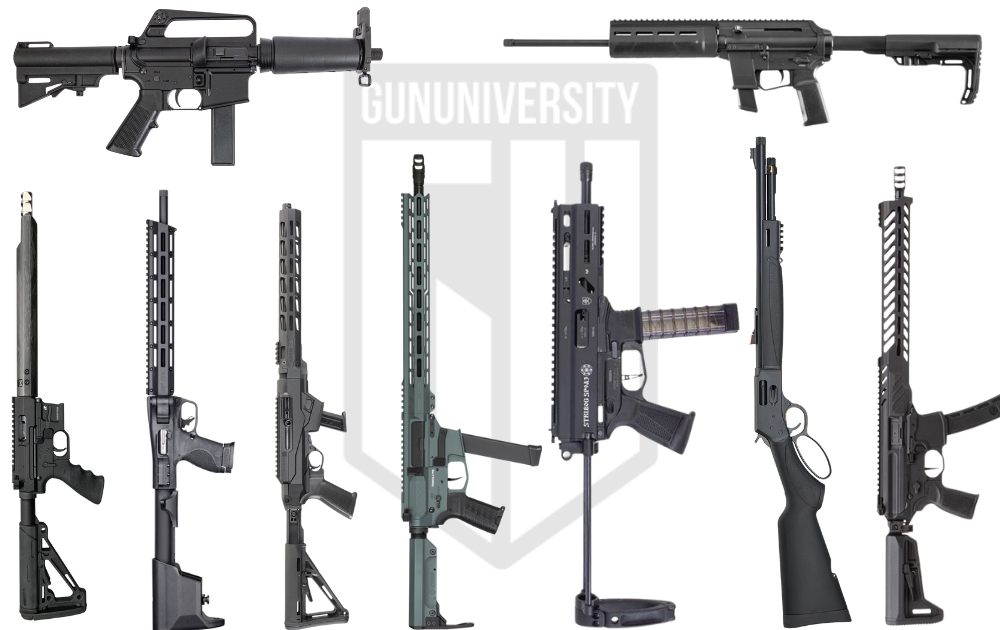
What is a PCC?
PCC stands for pistol caliber carbine. It’s a long gun designed to fire a pistol cartridge, i.e. a handgun caliber round. That round can be anything from a 32 ACP to a 500 S&W. Today the term PCC also alludes to SMG-based pistols.
We here at Gun University usually restrict the PCC title to something in a common production ammunition caliber; 5.7 and 4.6, for instance, we usually call a PDW (a personal defense weapon). More on that later – and we’ll talk about sub guns, too.
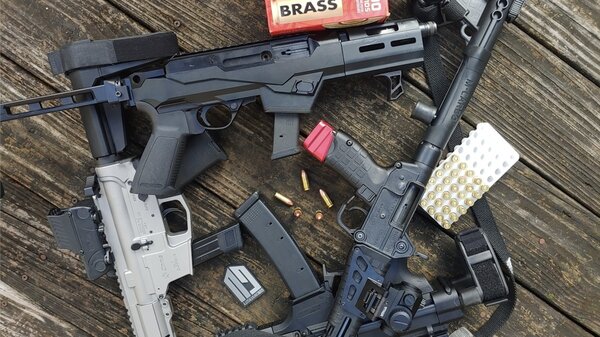
Here’s an example. Size is often an advantage but isn’t always a determining factor. An MPX Copperhead is relatively tiny (albeit not next to a Glock 17). It’s a foot long without a brace or stock, but some call it PCCs. A Ruger PC charger is 34″ long with a 16″ barrel, in 9mm. It’s definitely a PCC. The Kel-Tec Sub 2000 is 30.5” and is a 9mm; it’s a PCC, right?
But the CMMG Dissent, by contrast, averages around two feet long – and is chambered in 9mm, 10mm, 5.7, 4.6, and all sorts of other calibers. All PCCs? Some are PDWs? Going back to the Copperhead, when does it become a sub gun?
Another question to consider: is a PCC a rifle? Not really; PCCs are different from rifles in that they are smaller and allow for easier maneuvering than a rifle, and rifles are good at long-range accuracy while PCCs do well at close range.
As for the handguns vs. PCC topic, I’d say the PCCs give better stability making it easier to shoot than your handgun. Small sidearms are a bit tough to get used to, and with a PCC you don’t have that challenge since they’re larger. That’s why recreational shooters and newbies tend to go for PCCs.
Appearances to the contrary, I’m not bringing these up to confuse or distract you. I just want you to know there is no hard and fast definition of “pistol caliber carbine.”
For simplicity’s sake, when we say PCC below, we mean one of two things: Either a long gun (carbine or SBR, for instance) that is chambered in a common, traditional handgun cartridge or a sub gun/SMG-type weapon that is larger than a handgun.
I’ll warn you up front – this list will probably change over the next few months as pistol brace laws change and drive weapon evolution. So check back when you can and definitely let us know what you think (or find out) in the comments below.
How I Chose the Best PCC
As an experienced shooter and former Marine, I’ve had the privilege to own and test a wide range of PCCs (Pistol Caliber Carbines), including some provided by manufacturers. When writing this article, I reflected on the PCCs that have served me well over the years.
However, I’m just one person, so I also consulted with some of the industry’s leading shooters about the PCCs on my list. They even recommended a few of their favorites. As a result, I’ve compiled a comprehensive list of what I believe are the best PCCs on the market.
But remember, not all PCCs are created equal, and there’s no universal standard for comparison. Preferences can be very personal, and what works for me might not work for you. That’s why I’ve made an effort to include a wide variety of options and categorized the PCCs for their best use case to suit everyone’s needs. I’ve also included a buyer’s guide to help you understand what to consider when purchasing a PCC.
Note: I’ll warn you up front – our list will probably change over time as pistol brace laws change and drive weapon evolution. So check back when you can and definitely let us know what you think (or find out) in the comments below.
Best PCCs
Our Top PCCs
Author’s choice Ruger PC Carbine | 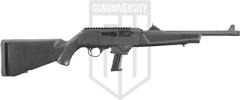 |
| See Price |
Top for competition SIG MPX PCC | 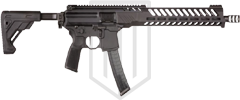 |
| See Price |
Better for competition? JP JP5 | 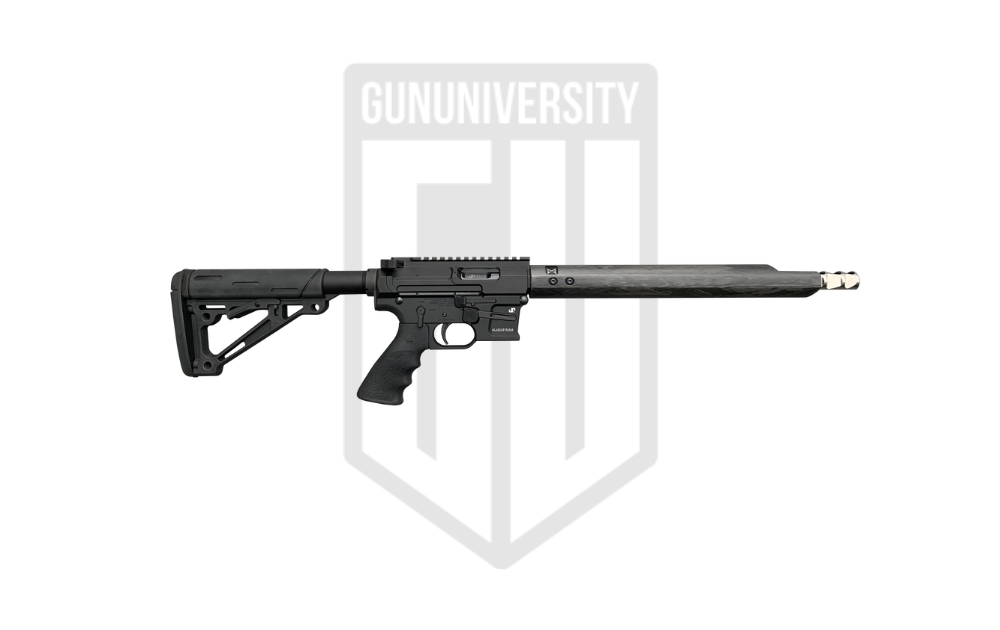 |
| See Price |
Best AR9 CMMG Banshee | 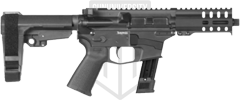 |
| See Price |
Most portable S&W FPC | 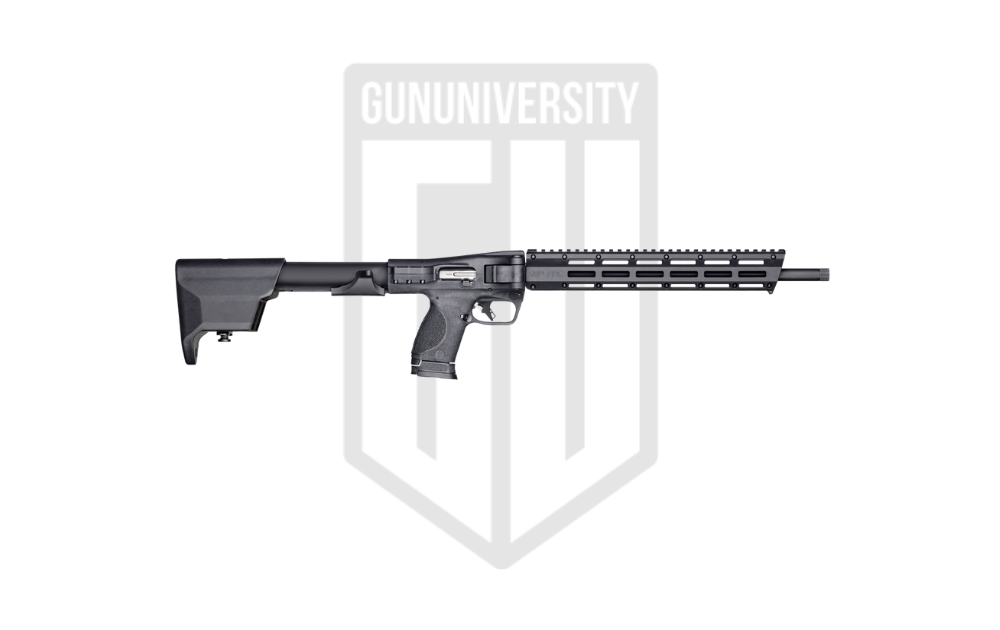 |
| See Price |
Best lever action Henry Big Boy X | 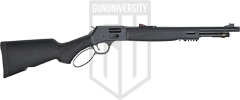 |
| See Price |
Top budget choice Extar EP9 | 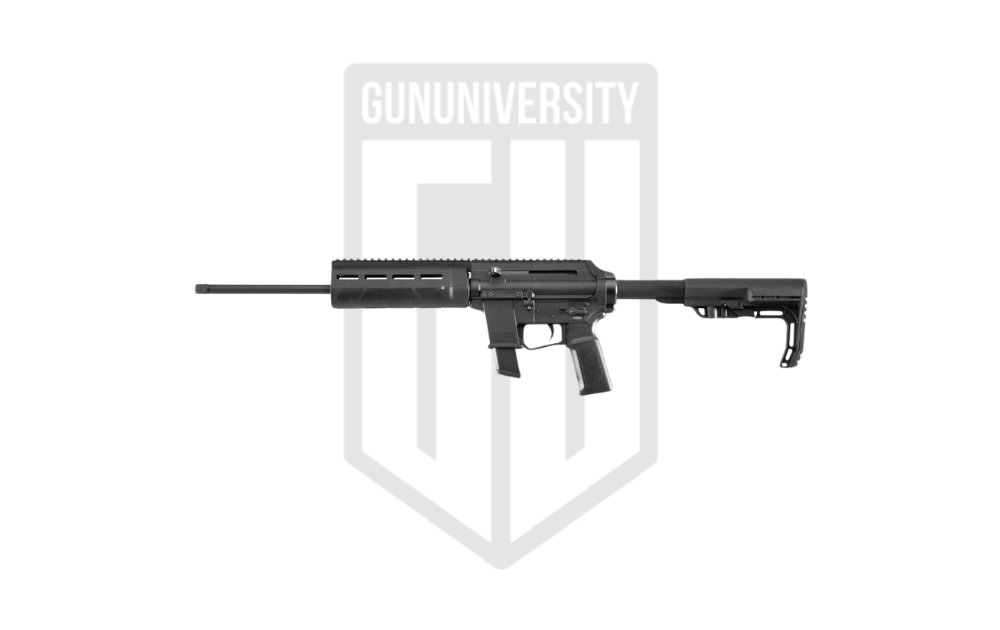 |
| See Price |
Most unique (and coolest) H&R DOE SMG | 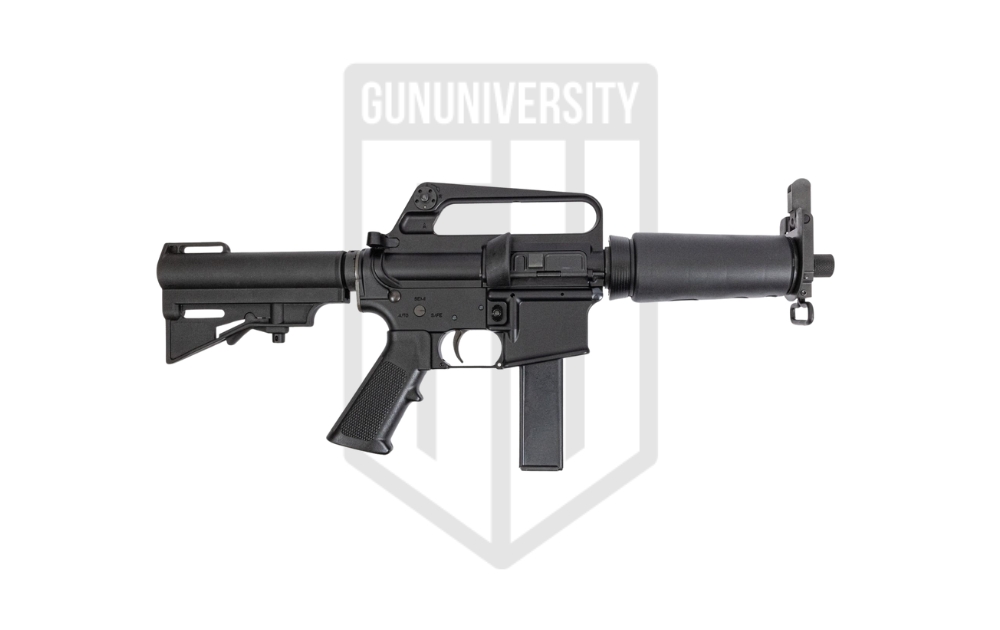 |
| See price |
Editor’s Choice Stribog SP9A3 | 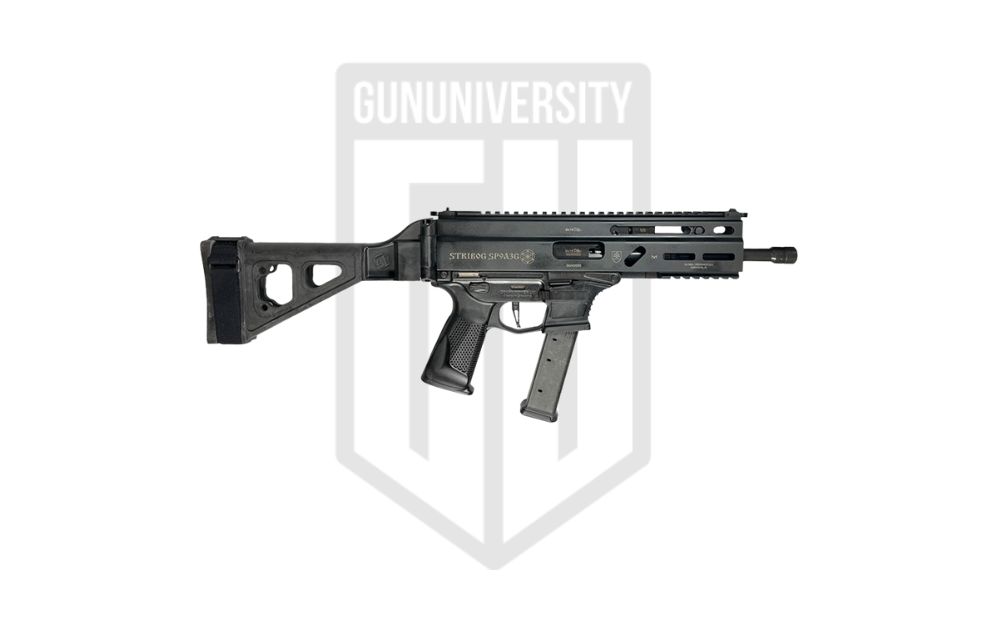 |
| See price |
Spec Comparison of the Best Pistol Caliber Carbines
Here is a breakdown of the specs on each PCC:
| PCC | Caliber | Capacity | Overal Length (in) | Weight (lbs) |
|---|---|---|---|---|
| Ruger PC Carbine | 9mm | 17 | 34.37 | 6.8 |
| Sig MPX PCC | 9mm | 30 | 35.25 | 6.63 |
| JP JP5 | 9mm | 33 | 31.5 | 6.1 |
| CMMG Banshee | 9mm | 21 | 18.9 | 4.625 |
| S&W FPC | 9mm | 17/23 | 30.36 | 5.25 |
| Henry Big Boy X | 44 Magnum / 45 Colt / 38 Special / 357 Magnum | 7 | 36.3 | 7.3 |
| Extar EP9 | 9mm | 17/33 | 31.25 / 35 | 4.09 |
| H&R DOE SMG | 9mm | 20 | 21 | 5.75 |
| Stribog SP9A3G | 9mm | 33 | 16.7 | 4.54 |
List of the Best Pistol Caliber Carbines
The Best PCCs are:
- Ruger PC Carbine
- SIG MPX PCC
- JP JP5
- CMMG Banshee
- S&W FPC
- Henry Big Boy X
- Extar EP9
- H&R DOE SMG
- Stribog SPA3G
Pistol Caliber Carbine Reviews
#1 Ruger PC Carbine : Author’s Choice
Ruger PC Carbine
A direct blowback styled PCC from Ruger that’s available in many different models including a takedown version.
- Shootability A
- Ergonomics B
- Reliability A+
- Value A
- Accuracy B
Our Grade
A-
Reader’s Grade
A
Based on 36 Reviews
Your Grade
Do You Own This Gun? Leave A Review
Success Your Grade Has Been
Added To Our Reader’s Score
We use email to verify the accuracy of our reviews. We promise to never spam you.
Specs
- Capacity 17
- Caliber 9mm
- Sights Protected Blade (Front Sight), Adjustable Ghost Ring (Rear)
- Overall length 34.37″
- Length (barrel) 16.12’’
- Weight 6.8 lbs
Ruger PC Carbine Review
I took this 9mm carbine, and later the Charger variant, as an interesting development from Ruger, a company that usually sticks to its “standard” firearm lineup. I’ve never really thought of Ruger as edgy…probably no one has. And honestly, that’s not a bad thing.
Ruger has dabbled in PCCs before, like with their Police Carbine, but they discontinued it in 2007. It’s a shame because the PC Carbine feels like a modern-day version of that older model.
This 9mm carbine uses Ruger’s Dead Blow blowback system, which has a tungsten weight attached to the bolt to reduce bolt travel and recoil. It’s a bit unusual, but it does make the recoil more manageable. My gripe? The barrel fluting is supposed to make it lighter, but the Dead Blow system adds bulk, making it heavier than it should be.
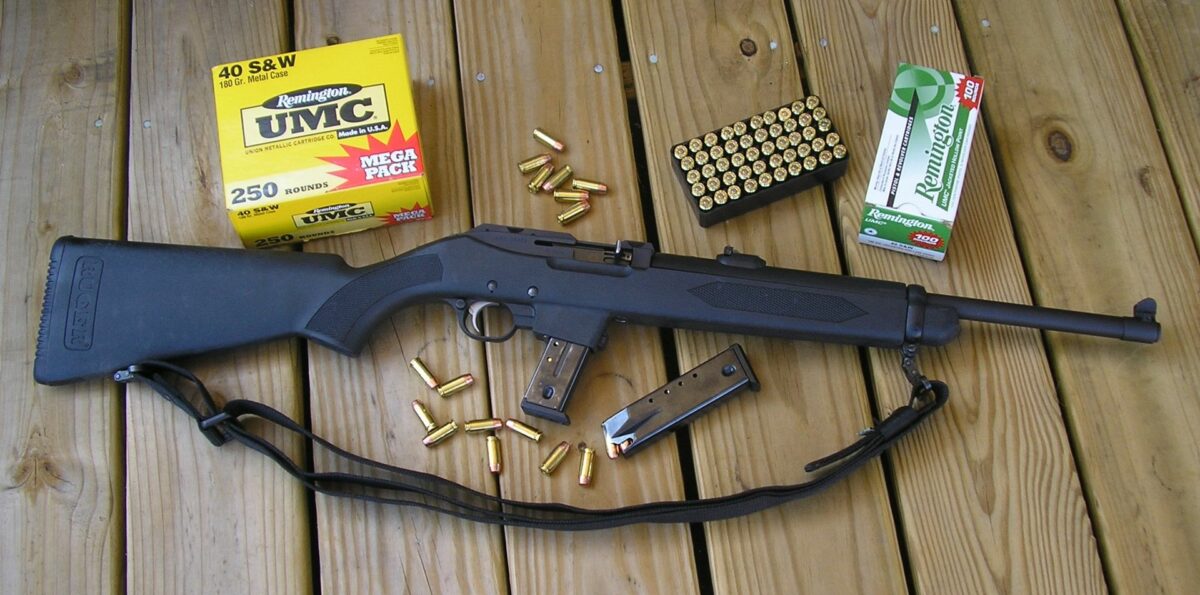
The standard Ruger PC really stands out for its simplicity. It’s affordable, familiar, and incredibly versatile. The soft rubber buttpad is adjustable, so both my wife and I can shoot comfortably, and the threaded barrel makes swapping out muzzle accessories easy. Overall, it’s a solid choice that’s practical and reliable.
Check out our full review here on the Ruger PC Carbine!
Pros and Cons
- Ambidextrous charging handle
- Great sights
- Bolt hold open feature
- Threaded barrel
- Mag release is clunky
- Heavier than other platforms
#2 Sig MPX PCC : Top for Competition
Sig MPX PCC
The latest SIG Sauer foray into the PCC arena redesigned with performance enhancements to cater to competition shooters.
- Shootability A
- Ergonomics A
- Reliability A+
- Value B
- Accuracy A+
Our Grade
A
Reader’s Grade
B+
Based on 9 Reviews
Your Grade
Do You Own This Gun? Leave A Review
Success Your Grade Has Been
Added To Our Reader’s Score
We use email to verify the accuracy of our reviews. We promise to never spam you.
SIG MPX Specs
- Capacity 30 Rounds
- Caliber 9mm Luger
- Sights Picatinny Rail for optics mounting
- Overall length 35.25″
- Length (barrel) 16’’
- Weight 6.63 lbs
Sig MPX Review
The SIG Sauer MPX is a runner for HK MP5 replacement among the civilized world. (Cue a hope they remake the 1990’s Navy SEALs movie with Dale Hawkins running a suppressed MPX.) It’s a really well-designed platform; the biggest thing it has going for it, IMHO, is that it uses a short-stroke gas piston system over a blowback design. Controllability for the win.
In my experience, the MPX is the best for competition, no question. The short-stroke gas piston system is a real game-changer. It keeps the recoil down to almost nothing, which means I can stay on target and make those quick follow-up shots that are so crucial in competition.
The AR 15-style controls are a perfect fit, and with the ambidextrous design, it feels natural, whether I’m practicing at the range or in the heat of a match. The trigger is another highlight. It’s smooth and crisp, better than any PCC trigger I’ve used.
The downside? Those proprietary magazines aren’t cheap. At $50 each, they’re a bit steep, and there aren’t any aftermarket options. But with the slim M-LOK handguard, adjustable folding stock, and overall performance, the MPX is worth every penny.
When it comes to competition, the SIG MPX isn’t just good—it’s unbeatable.
Read our full length review on the Sig MPX Copperhead, the short barrel version of the MPX PCC
Sig MPX PCC Pros and Cons
- Great trigger
- Short-stroke gas piston-operated
- Extremely reliable
- Very small aftermarket
- Expensive gun and magazines
#3 JP Rifles JP5 : Better for competition?
JP Rifles JP5
The JP5 9mm carbine is among the most popular PCCs in competition shooting.
- Shootability A+
- Reliability A+
- Ergonomics A
- Accuracy A
- Value B
Our Grade
A
Reader’s Grade
TBD
Based on 0 Reviews
Your Grade
Do You Own This Gun? Leave A Review
Success Your Grade Has Been
Added To Our Reader’s Score
We use email to verify the accuracy of our reviews. We promise to never spam you.
JP5 9mm Carbine specs
- Barrel JP Supermatch
- Caliber 9mm Luger
- Operating system Roller Delayed
- Overall length 35″
- Length (barrel) 16.1″
- Weight 6.1 pounds
JP5 9mm Carbine Review
JP Rifles might not be a household name like S&W, but if you speak with competitors, they are a go-to company…if you can afford them. The JP5 is their premiere PCC for competition use. It’s well suited for USPSA PCC, Steel Challenge, and other action shooting sports. The JP5 makes it easy to shoot fast by eliminating recoil and muzzle rise and maximizing reliability.
The JP5 series uses a roller-delayed design, much like an MP5. A roller-delayed bolt results in hardly any recoil. It’s one of the smoothest shooting guns I’ve ever handled. The recoil is buttery and a lot different than your classic blowback carbine. The JP5 series can be modified to work with shorter barrels or the classic full-length 16-inch option.
One of the biggest compensators I’ve ever seen sits at the end of that barrel. It seems almost ridiculous for a 9mm. That’s until you pull the trigger. If you’re used to upward muzzle rise, then this will be an eye-opening experience. The gun barely moves, and you can send lead downrange quickly with excellent accuracy.
The JP5 has a pretty high price tag—more than three thousand dollars. The JP5 holds nothing back, including its price tag. These are premium-built rifles, and they perform like premium-built rifles, which involves a premium price point.
JP5 9mm Carbine: Pros and Cons
- Super Accurate
- Low Recoil
- Muzzle Rise
- This thing ain’t cheap
#4 CMMG Banshee : Best AR9
CMMG Banshee
A premium option for those looking for tons of features and a fun gun to shoot.
- Shootability A
- Ergonomics A
- Reliability A
- Value C
- Accuracy B
Our Grade
B+
Reader’s Grade
B-
Based on 8 Reviews
Your Grade
Do You Own This Gun? Leave A Review
Success Your Grade Has Been
Added To Our Reader’s Score
We use email to verify the accuracy of our reviews. We promise to never spam you.
CMMG Banshee Specs
- Capacity 21 Rounds
- Caliber 9mm
- Sights Picatinny Rail
- Overall length 18.9″
- Length (barrel) 5’’
- Weight 4 lbs 10 oz
CMMG Banshee Review
The Banshee line by CMMG is a huge range of long guns available in both rifle and pistol calibers. Focusing on their PCC lineup, it’s clear why the CMMG Banshee stands out as the best AR9.
The 300 Series really impressed me. It comes with an M-LOK rail, ambidextrous safety, and charging handle, plus some fantastic cerakote options. But what truly sets it apart is the radial delayed blowback system. This design choice means you don’t have to deal with heavy bolts or buffers, which makes shooting so much more comfortable.
I had a blast testing the CMMG Banshee, running over 500 rounds through the 9mm variant. At just 4 lbs 10 oz and 18.9 inches in length, it’s surprisingly light and compact. It performed well with both FMJ and JHP rounds, and the accuracy was impressive. I managed 2-inch groupings at 50 yards and under 1-inch groupings at 25 yards.
The Banshee’s compatibility with Glock, SIG, and FN magazines adds a layer of convenience. The price is on the higher side, but for the performance and versatility you get, the CMMG Banshee definitely earns its spot as the best AR9 out there.
Check out our full review on the CMMG Banshee here!
CMMG Banshee Pros and Cons
- Low recoil
- Lightweight, compact designc
- Accurate
- Fun to shoot
- Expensive
#5 Smith & Wesson M&P FPC : Most portable
Smith & Wesson M&P FPC
The S&W FPC modernizes and refines the folding pistol caliber carbine into a solid, dependable carbine.
- Shootability A
- Reliability A-
- Ergonomics A
- Accuracy A-
- Value A-
Our Grade
A-
Reader’s Grade
A
Based on 4 Reviews
Your Grade
Do You Own This Gun? Leave A Review
Success Your Grade Has Been
Added To Our Reader’s Score
We use email to verify the accuracy of our reviews. We promise to never spam you.
S&W FPC Specs
- Capacity 17-23
- Caliber 9mm Luger
- Sights Optics Ready
- Overall length 30.36″
- Length (barrel) 16.25’’
- Weight 5.25 lbs
S&W FPC Review
I love the SUB 2000. I’ve owned one for a very long time, since the first generation. Almost two decades now. With that in mind, the S&W FPC is the better gun. While it might seem like S&W copied KelTec’s homework, the FPC makes its own way in a world of folding pistol-caliber carbines. While the KelTec represents the original idea and is cheaper, the S&W FPC gives us a refined option.
The FPC folds to the side rather than over the top, creating a compact package without any optics in the way. The side folding action is triggered by a large thumb drive lever that makes the gun easy to fold and deploy. The folding mechanism is beefy, sturdy, and safe. You can’t fold the gun with a loaded chamber.
The FPC uses M&P magazines and even comes with three of them! You get a standard 17-round magazine and two 23-round magazines. S&W designed the stock with the ability to hold two spare magazines, so theoretically, your FPC can be loaded down with 63 rounds all on the gun.
Once you hit the range, you’ll find an accurate, easy-to-shoot gun. While it’s a straight blowback design, the recoil feels soft. The trigger makes its best impression of the M&P pistol trigger, but it is a little more spongy and longer, but still quite nice. Little features like the ambidextrous charging handle, the comfortable stock, and the fact that it comes with a nice carry bag make the FPC an excellent PCC.
S&W FPC Pros and Cons
- Affordable design
- Uses S&W M&P Magazines
- Stock Holds Spare Magazines
- Not Lefty Friendly
#6 Henry Big Boy X : Best Lever Action
Henry Big Boy X
A lever action-styled PCC that provides plenty of opportunity for customization and accessories.
- Reliability A
- Ergonomics B
- Accuracy A
- Shootability A
- Value C
Our Grade
B+
Reader’s Grade
A
Based on 10 Reviews
Your Grade
Do You Own This Gun? Leave A Review
Success Your Grade Has Been
Added To Our Reader’s Score
We use email to verify the accuracy of our reviews. We promise to never spam you.
Henry Big Boy X Model Review
- Capacity 7+1
- Caliber 44 Magnum, 45 Colt, 38 Special/357 Magnum
- Sights Factory Red/Green Fiber Optics
- Overall length 36.3″
- Length (barrel) 17.4’’
- Weight 7.3 lbs
HENRY BIG BOY X MODEL REVIEW
The term tactical lever gun might sound terrible. I mean, Mossberg proved with their Zombie series years ago, so yeah, the concept of a tactical lever gun can be a steamer. But the Henry Big Boy X is something else entirely.
Having spent time with this rifle, I can say it’s hands-down the best lever action I’ve come across. It’s not just a looker; it’s packed with features that make it practical and efficient. Available in 38 Special/357 Magnum, 45 Colt, and 44 Magnum, it holds 7 rounds. I love the modern touches like the optics rail, high visibility sights, and threaded barrel. I added a silencer and muzzle brake, and the Picatinny and M-Lok slots let me deck it out just the way I want.
Weighing in at 7.3 lbs, it’s surprisingly light for a lever action. The bigger lever makes cycling smooth, even with gloves on. I was impressed with its accuracy, nailing shots at 50 yards and getting tight groupings at 100 yards. The lever action feels smoother every time I use it.
The side-loading gate is handy but can scratch the receiver, so watch out for that. Overall, the Henry Big Boy X stands out as the best lever action on this list.
If you like a more classic looking lever action, read our full review on the Henry Big Boy X and a Henry in brass with a side gate.
Henry Big Boy Pros and Cons
- Cool lever gun
- Comes in multiple calibers
- Very customizable
- Heavy trigger
- Odd ergonomics
#7 Extar EP9 : Best Budget Choice
Extar EP9
A surprise contender on our list that shows great reliability and value for those shopping for their first PCC.
- Shootability B
- Reliability B
- Ergonomics B
- Accuracy B
- Value A+
Our Grade
B+
Reader’s Grade
A+
Based on 1 Reviews
Your Grade
Do You Own This Gun? Leave A Review
Success Your Grade Has Been
Added To Our Reader’s Score
We use email to verify the accuracy of our reviews. We promise to never spam you.
Hi-Point Carbine Specs
- Capacity 10
- Caliber 9mm
- Sights Optics Rail
- Overall length 31.25″ / 35″
- Length (barrel) 16.23″
- Weight 4.09 lbs
Extar EP9 Review
Extar has a genius way of doing business. They produce AR-like PCCs at a very low price and pass that savings to the consumer by ditching the middleman. They sell directly to the public and can keep their various braced pistols and carbines affordable. The EP-9 carbine comes in a fairly standard layout.
It looks a bit like an AR-9 with a standard AR-15 layout. The gun uses an adjustable AR stock, AR controls, and an AR layout. The gun uses Glock mags and comes in 9mm, but the EP45 offers a .45 ACP option. The system uses a blowback system with a weight delay. It’s similar to Ruger’s dead blow recoil system but not quite the same.
The effect is less recoil than most direct blowback system but an odd recoil impulse. The AR-style charging handle is gone; instead, we have a left-side charging handle. Little features like a last-round bolt hold open are a nice touch that takes the rifle out of dirt-cheap territory and into a great bargain.
The Extar EP-9 series are quite accurate rifles with an easy-to-control design. They bring with them some AR modularity, including an M-LOK handguard and optics-ready design. It’s not quite an AR, but it’s close.
Extar EP9 Pros and Cons
- Excellent reliability
- Great Value
- Low Recoil
- No Ambi Charging Handle
#8 H&R DOE SMG : Most unique (and coolest)
H&R DOE SMG
Have you ever wanted to own an OG of AR9s? Through PSA and H&R you most certainly can.
- Shootability A+
- Reliability A+
- Ergonomics A-
- Accuracy B
- Value B
Our Grade
A-
Reader’s Grade
C
Based on 2 Reviews
Your Grade
Do You Own This Gun? Leave A Review
Success Your Grade Has Been
Added To Our Reader’s Score
We use email to verify the accuracy of our reviews. We promise to never spam you.
H&R DOE SMG
- Capacity 20
- Caliber 9mm Luger
- Trigger AR
- Overall length 21″
- Length (barrel) 7.5″
- Weight 5.75 lbs
H&R DOE SMG Review
Who knew Remington going out of business would be the catalyst for me to obtain a DOE SMG? I love weird and rare guns, and the Colt DOE SMG fits that to a T. It was the first Colt SMG and was often called the briefcase gun due to its small size. The Department of Energy adopted the weapon for protecting nuclear material, and I’ve always wanted one. Through their brand H&R, PSA has finally allowed me to wield my grail gun.
Sadly, their replica isn’t an SMG, but the attention to detail is remarkable. The guys at H&R are experts in retro builds, and the H&R Retro DOE looks like it should carry a Colt roll mark and protect nuclear material. This is one of the first ultra-short SMGs, and the gun has a 7.5-inch barrel and a collapsing brace.
The brace, known as the HAR-15, is brilliant. It is a blade-type design that looks like a CAR-15 stock. It completes the gun’s look with a lot of retro style. The gun also comes complete with a carry handle upper, an odd folding front sight, and an uber-short handguard. It completes the look that made this gun stand out.
The H&R Retro DOE is a simple straight blowback gun that feeds from a Colt SMG magazine. It’s not fancy, but very effective and reliable. The small A1-style rear sight feels odd but functional, and the gun is surprisingly accurate. It’s also just a total blast to shoot. As a retro AR enthusiast, the H&R Retro DOE delivers the rare retro PCC that I can’t help but love.
- Old School Cool
- Super Short and Compact
- Reliable
- Pricey
#9 Stribog SPA3G : Editor’s Choice
Stribog SPA3G
Now that it’ll feed from a Glock magazine, the Stribog is one of the top PCCs out there.
- Shootability B+
- Reliability B-
- Ergonomics B
- Accuracy B-
- Value C+
Our Grade
B-
Reader’s Grade
C+
Based on 7 Reviews
Your Grade
Do You Own This Gun? Leave A Review
Success Your Grade Has Been
Added To Our Reader’s Score
We use email to verify the accuracy of our reviews. We promise to never spam you.
Stribog SP9A3 Specs
- Capacity Varies
- Caliber 9mm
- Sights Integral flip-up
- Overall length 16.7″
- Length (barrel) 8″
- Weight 4.54 lbs.
Stribog SP9A3 Review
First off, stipulated: many people will call this a PDW, not a PCC. Some might even label it a sub gun. But since I’m writing this article, I’ll call it what I think fits best.
The Stribog SPA3G is what the original should have been. It finally addresses the issues with earlier models by accepting Glock mags, which is a game changer. The first Stribogs had proprietary straight mags with a not-so-great reputation. The next version had curved proprietary mags, but they were still a pain. Now, with the SPA3G, I can use any Glock or Glock-compatible mag, which is a huge relief. This upgrade makes the Stribog more reliable and user-friendly.
I really appreciate the non-reciprocating charging handle. It’s not only reconfigurable from left- to right-handed but also offers a nice place for my support thumb. My only gripe is the limited accessory space on the handle, but there’s still a Picatinny rail and M-Lok slots on the barrel for adding lights or sights. Plus, the barrel is threaded for a suppressor or muzzle brake.
The Stribog’s lightweight at 4.54 lbs and 6 lbs pull weight make it easy to handle. I rated it above the Kriss Vector mainly because of its familiar manual of arms. Without that factor, they’re pretty much tied in both the badass and go-buy categories.
Stribog SP9A3 Pros and Cons
- Glockivore- Takes all sorts of Glock/Glock-compatible mags
- Lightweight and compact- There’s a reason it’s a subgun/PCC/PDW
- Charging handle- Reversible and non-reciprocating; good stuff
- Times are a’changin’- Pistol brace laws may substantially mitigate its advantages
- Inaccurate- IF you have to shoot it without a brace or stock only
- Limited real estate- Charging handle side: could impact sling or accessories
Other PCCs
Well, not every PCC we have reviewed can make the best of list. Palmetto State Armory has two PCC style weapons that we have reviewed in the past but they did not make the list. Read our review on the PSA PX9 which is an AR style PCC and the PSA AK-V which is an AK style PCC.
Another well known PCC that did not make the list, but just barley fell short, is the CZ Scorpion.
We also have two new PCCs to the market, the Henry Homesteader and the Smith and Wesson M&P FPC. The homesteader is a traditional looking, wood stocked, PCC while the S&W FPC is a very modern looking PCC that folds in half.
PCC Buyers Guide
PCCs are some of my favorite firearms. They’re cheap and fun to shoot, and I own more than I need. They might not be for everyone, but they are an excellent option for many.
PCC Pros
Maybe you are not specifically shopping for a PCC. Perhaps you are considering all of your firearm options. Maybe you don’t know the benefits of a 9mm carbine or other PCC. Whatever the reason is, we’re going to give you the info you need to make an informed decision.
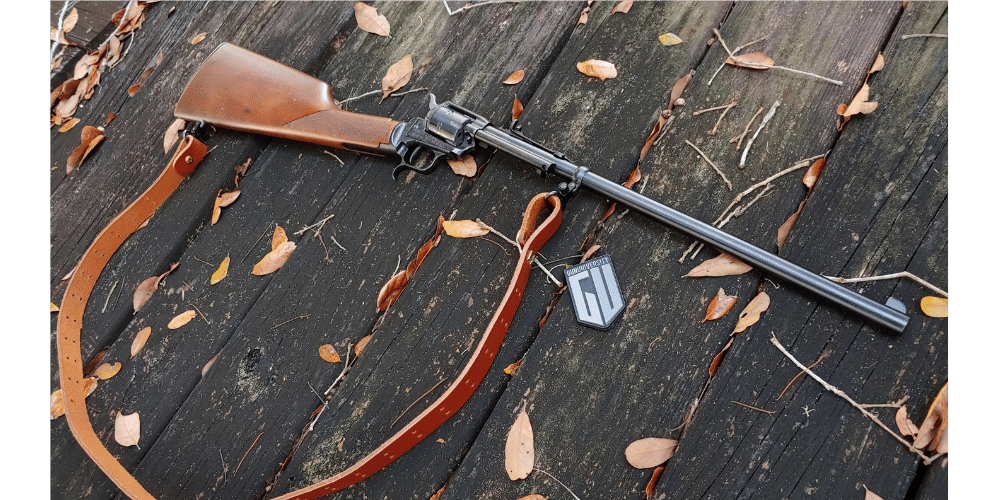
Cheaper Ammo and (Sometimes) Easier Logistics
Pistol ammo is almost universally cheaper than rifle ammo. Magnum calibers exceed that, but mostly the price difference is significant. A 9mm Luger can be half the price of 5.56.
Some PCCs use standard pistol magazines. Glock is the most popular, but SIG, Ruger, and S&W magazines in PCCs aren’t unheard of. This simplifies your logistics in numerous ways. First, if you own a pistol that uses the same magazines, you already have a source to draw from.
Second, the magazines are not proprietary. These are often easier to find and usually cheaper. That eases the $$$ sting of buying a new platform.
Caliber can improve performance
Which caliber to use is always a big question with a long answer full of nuance. What caliber should your PCC be chambered in? If you just want an affordable, capable, and easy-to-find caliber, 9mm is the way to go. 9mm is plenty cheap, and the defensive loadings are very capable. Subsonic 9mm is also quite common for use with cans.
If you want a caliber that can take advantage of a PCC’s longer barrel and ability to be more accurate, then the 10mm might be the pistol cartridge for you. The 10mm has good power out to 100 yards and is relatively flat shooting.
If you take a slightly different route and utilize a cowboy-style lever gun, the 357 Magnum guns can shoot the cheaper 38 Special for more affordable target practice. While the word Magnum sounds intense, in a rifle, it’s rather pleasant and soft shooting.
There are some niche calibers you could argue walk the line between PCC and rifle round like the 5.7X28. They can be pretty neat but pricey and difficult to find. If you take this route, just keep that in mind.
If your round of choice isn’t mentioned here, don’t feel left out. Most common pistol rounds will work fine in PCCs and function well for defensive shooting. Rounds like the 40 S&W and 45 ACP simply don’t do anything special worth mentioning. They are functional, potent, and capable, but more expensive than 9mm and weaker performers compared to 10mm.
If you have handguns in a particular caliber, then you may want to match your PCC caliber to your handgun caliber for simpler logistics.
Super Short and Light
PCCs have the ability to be lighter and shorter than traditional long guns like the AR15 and AR10. Even full-sized PCCs with 16-inch barrels tend to be lighter than rifle-caliber weapons. Look at subguns and you can go even shorter and even lighter.

The Banshee Mk17 weighs 4 pounds and 10 ounces and is 18.9 inches long. PCCs can have super short barrels without a loss of ballistic performance. A 9mm-chambered PCC with a 5-inch barrel is much more comfortable to handle and shoot than a 5.56 AR 15 with a 5-inch barrel.
This creates a very small and competent firearm that’s easy to handle for most shooters. Smaller shooters or shooters without a ton of strength benefit greatly from lighter and shorter weapons. PCCs are often a favorite of shooters with arthritis or limb injuries in general.
PCCs are also used as a truck gun because they are compact and lightweight; you can take them hiking or trailing for the same reasons.
Pleasant to Shoot
Pistol caliber carbines (PCCs) are much larger than standard pistols, which makes them incredibly comfortable to shoot and handle. They offer minimal recoil and reduced concussion, making for a smoother shooting experience. Plus, PCCs generally provide much better accuracy compared to handguns.
The bigger calibers become very loud when used with short barrels, producing a massive concussion and muzzle blast that’s not present in short-barreled PCCs or sub guns.
The mild impulse, noise, and concussion make them a lot less scary if you are a new shooter and much more attractive to those looking for an easy-handling and fun gun.
Easy to Suppress
PCCs are excellent candidates for noise suppression!
First, pistol calibers are very easy to make subsonic, so ammo is widely available without paying a high price or having issues hunting it down. Supersonic ammo leaves a telltale crack even when the gun is suppressed. Subsonic ammo keeps things quieter.
Second, pistol-caliber cans are often more affordable than their rifle caliber counterparts.
Lastly, if you take the sub gun or the SBR route, a PCC can have a short barrel with a relatively short can. This creates a combination that can still be shorter than any standard long gun.
Allowed At Pistol Ranges
You may live in an area where the only local ranges are indoor ranges. Most indoor ranges only allow pistol calibers due to relatively short ranges, the confined space, and how much more powerful a rifle round is than a pistol.
These ranges will still allow you to use a PCC and get your training in. Another significant benefit is the fact you can use pistol-rated steel targets. These are a fair bit cheaper than most rifle-rated steel, which is nice.
PCC Cons
Like anything in the gun world, there are always compromises. With all the benefits of PCCs come a few downsides worth noting.
Not the most powerful
The biggest downside is that you are still just shooting a pistol caliber. Pistol calibers are nowhere near as powerful as rifle or shotgun rounds. Pistol-chambered long guns have all the advantages of their brawnier cousins, but their rounds lack substantial power and range – although this may be offset by the fact that sometimes you’ll be able to cross load magazines into your concealed carry magazines.
At 50 yards and in the PCC can rule. From 50 to 100 yards, you start to deal with some substantial problems with bullet drop and a loss of energy from most pistol calibers. Even the most powerful pistol rounds can’t touch a rifle round. You can’t get the same penetration from a pistol round, and all-around ballistically, they are significantly weaker. For example, a PCC can’t defeat body armor; it doesn’t have the required penetrating power. That’s why some call out the PCC for not being a serious gun, but I’d say each to his own.
Proprietary magazines
Remember that “sometimes” I mentioned when regarding easier logistics? Well, sometimes, they are harder. Some PCCs use proprietary magazines, which can be expensive. Not always, of course – the CZ has many affordable magazine options. But that isn’t always the case.
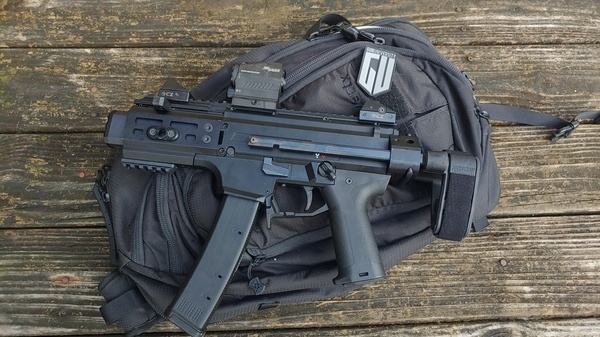
However, guns like the MPX and the various MP5 clones have magazines that cost upwards of 50 bucks a pop. Proprietary magazines also remove some of the compatibility options you might have with your concealed carry pistol.
PCC for home defense
Many may wonder, is a 9mm carbine or other PCC a good choice for home defense? Well, yeah, as with any gun, they need to be a quality gun before they are trusted as a home defense tool. However, I do believe PCCs are an excellent choice for home defense.
They are lighter and easier to handle than rifles, typically more comfortable, and produce less concussion. If you’ve never fired a 5.56 rifle inside a building, you’ll be absolutely shocked at how loud and forceful it is. The blast is brutal, as is the noise. When you’re in a fight, it doesn’t matter much, but preserving your hearing is nice.
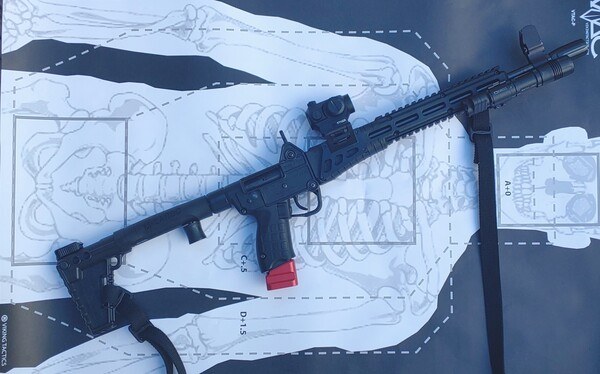
This leads us back to cans, which can be equipped to a short PCC without making the gun overtly long. You can use easily suppressed subsonic ammo in defensive loadings that are perfect for home defense.
Pistol rounds don’t hit like rifle rounds, but with proper ammo selection, they are still capable and effective defensive rounds. For those with reduced strength, a PCC that they can fire accurately and repeatedly is often a better choice than a rifle that they can only fire once.
Inside a PCC – Operating Systems
Rifles, shotguns, and handguns all have various systems they operate on. These systems vary from manual action to semi-automatic, and inside, both of those are sub-categories. PCCs seem to have more operating systems than any other platform, and they are typically interesting and worth knowing about when you are considering buying a PCC because they affect how the weapon functions and how it handles.
Straight blowback
Straight blowback is the most common PCC operating system. It’s simple, affordable, and reliable, often seen in SMGs. This system relies on expanding gases pushing the shell from the chamber. To handle the pressure, you need a heavy bolt or strong spring to delay the bolt’s opening until the projectile clears the barrel. While this design is straightforward, it typically results in higher recoil or “kick,” and the added weight of the bolt and spring can make the weapon bulkier and harder to handle ergonomically.
Radial-delayed blowback
Developed by CMMG for the Banshee series, the radial-delayed blowback uses a bolt with angular lugs that lock into a specially cut chamber. These lugs rotate to unlock, allowing the projectile to exit the barrel and pressure to drop before the bolt opens. This system eliminates the need for heavy springs and bolts, resulting in a lighter weapon with reduced recoil. CMMG is the main producer, but they offer parts for building your own AR-type PCC with radial-delayed action.
Dead blow blowback
Ruger’s dead blow blowback, used in their Carbine and Charger series, includes a tungsten weight on the bolt to limit travel and improve control. Named after the dead blow hammer, this system maintains the simplicity of straight blowback while reducing recoil. The downside is the heavy bolt is still very present in this system.
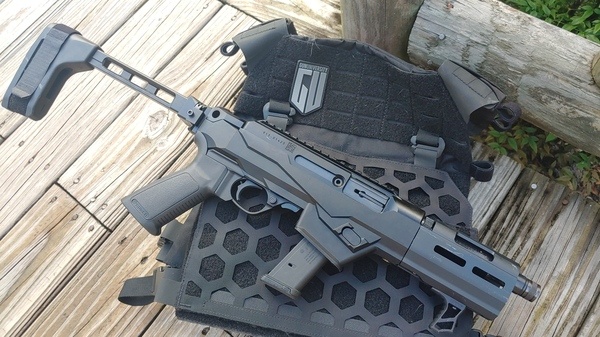
Roller delayed blowback
The roller delayed blowback, originally from World War II, is famous for its use in the MP5. It employs rollers on the bolt to delay its movement, allowing the bolt carrier to move before the bolt head. This system is lightweight and reduces recoil, though it can be dirty and less compatible with suppressors.
Short stroke gas system
While less common in PCCs, the short-stroke gas system is seen in rifle-caliber rifles. It uses a piston mounted on the barrel, with gas from the barrel driving the piston rearward to cycle the bolt. This system offers soft recoil and high reliability but can be more complex and costly. It’s generally not a concern for PCCs, as they are not used at long ranges where accuracy might be an issue.
Lever actions
Lever actions are the manual option for PCCs. Users activate a lever to extract, eject, and load the next round. This system is highly reliable as it’s mechanically operated by hand, with malfunctions usually arising from user error or a broken gun. Lever actions are simple but require more practice compared to semi-autos. They are still fast in skilled hands and are often available in states with strict gun laws. Additionally, they can safely handle magnum calibers.
Additional factors to consider when choosing a PCC
Whether it’s for home defense or recreational use, going for a PCC is a smart choice–smarter if you choose the best fit that works for your needs. Here are some more factors to consider when buying a PCC in addition to what we discussed.
- Weight – PCCs are generally lightweight and easy for newbies or shooters with small builds to handle, but you still need to look at the weight distribution. PCCs with more weight toward the barrel than the stock can be ‘top heavy’ and can cause too much muzzle jump, and on the other hand, being too lightweight can be a cause for recoil. You have to find the right balance to get the best out of your PCC.
- Barrel length – Long barrels can improve the power and accuracy of a PCC, so a barrel between 10-16 inches is a solid choice. If the PCC is for home defense though, you can opt for a shorter barrel because they are easy to maneuver.
- Trigger – A trigger with less pull weight and a clean break can make your PCC a joy to shoot with, so try out your choice before committing to a purchase. Aftermarket triggers can be quite expensive so your best bet is to go for a PCC with a good factory trigger.
- Accessory compatibility – Adding a few accessories like sights, suppressors, and muzzle brakes can greatly improve the performance, so consider getting a PCC with rail mounts and threading to attach the accessories you need. Keep in mind that suppressors are regulated by the National Firearms Act and require a background check to own one.
- Cost – The cost of PCCs start around $300 and go upward of $2,000 with varying degrees of performance and quality. Consider your familiarity with PCCs and the purpose of getting one to decide on your budget. A newbie can learn the ropes with a low-cost, serviceable PCC while experienced shooters can get feature-rich PCCs at a higher price bracket.
- Legal restrictions – PCCs fall under the same regulations as rifles so consider checking your state’s laws before you buy. Especially, PCCs with a barrel shorter than 16 inches and an overall length shorter than 26 inches are considered a ‘short barreled rifle’ that needs some paperwork to own and use.
It might seem like a lot to consider, but once you do have the right PCC in your hand, it can serve you well and make shooting fun.
Conclusion
The PCC is a lightweight gun that even shooters with less hand strength can handle, and it shoots with satisfying accuracy. It’s also an easy-buy because there’s a choice in any price bracket, and once you attach a few accessories to improve its performance, you’ll know why the PCC is a favorite for sport shooting, competitive shooting and even home defense.
Additional Relevant Reading
- • Learn about 9mm carry ammo options.
- • Brush up on how to use a rifle sling.
- • Read about the PCC that never was.
Best PCC – FAQs
The effective range of a PCC is up to approximately 50 yards, but it can accurately shoot at targets 100 yards out.
16-inch is an ideal barrel length for a 9mm PCC because it can help reduce the recoil while still being of manageable length. Depending on your ergonomic preference, you can go for a barrel length between 10-16 inches.
Yes. Some states like California and New Jersey have restrictions set up, so it’s always good to check your state’s laws about firearms ownership and carry.
It’s possible to land sub-1-inch groupings under 25 yards and 2-inch groupings at 50 yards with a 9mm PCC. Keep in mind that the type of ammo and the operational skill factor counts for consistent accuracy, so different shooters may see diverse results when it comes to accuracy with a PCC.
This comes down to preference and circumstances. Performance-wise, PCCs and pistols are both neck and neck, but some shooters find PCCs easy to handle for home defense and some find the size of pistols convenient in certain situations like concealed carry or self defense.
Definitely. PCCs on rifle platforms, like those built on AR-15 designs, are great for both competition and home defense. They’re versatile, allowing you to customize them for accuracy in matches or for quick, reliable use in a self-defense situation.
Recent Posts
December 8, 2025
November 29, 2025
November 25, 2025
November 22, 2025

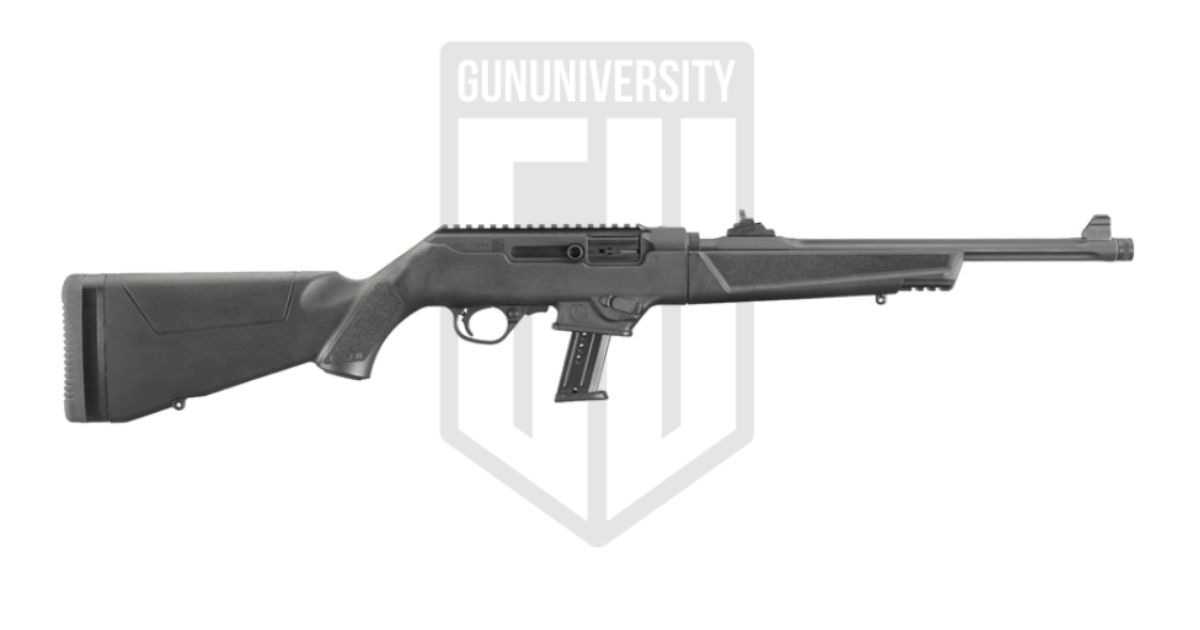
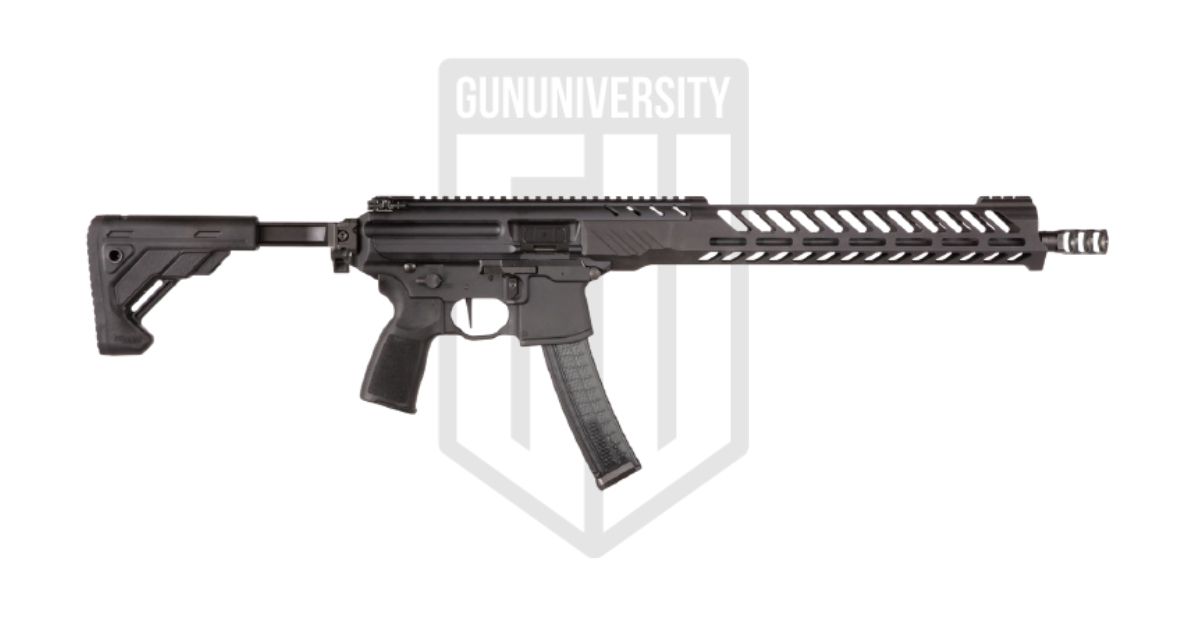
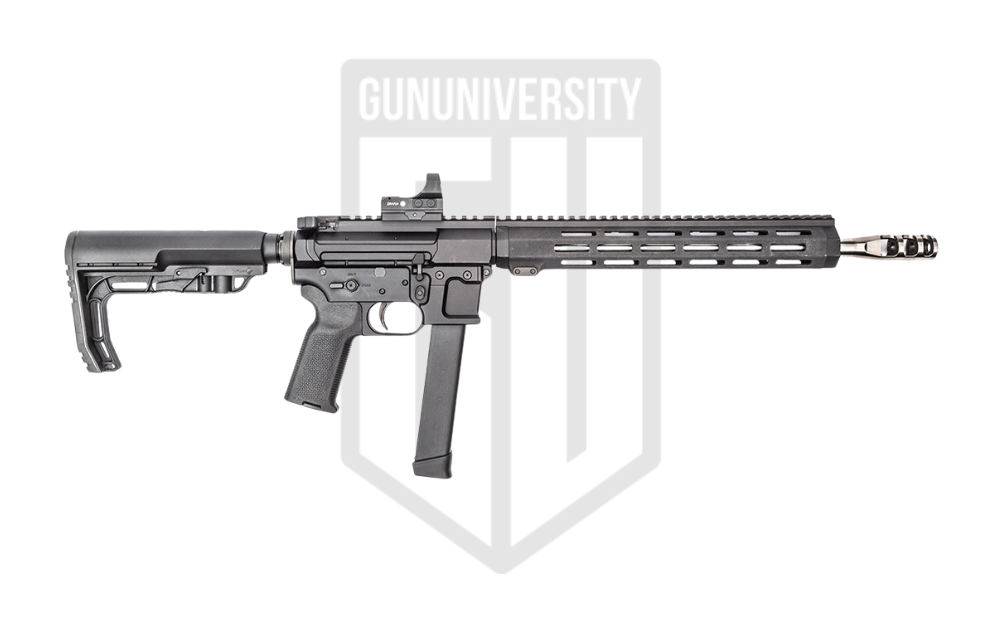
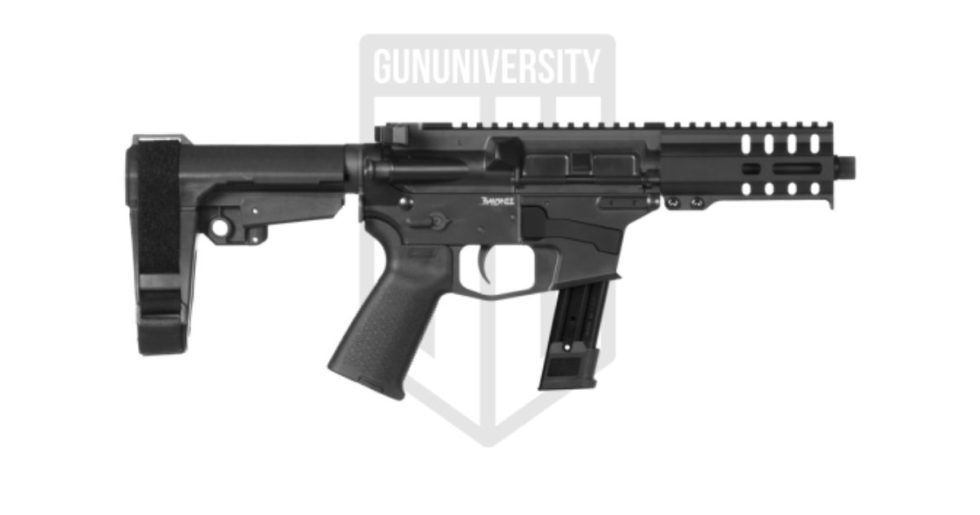
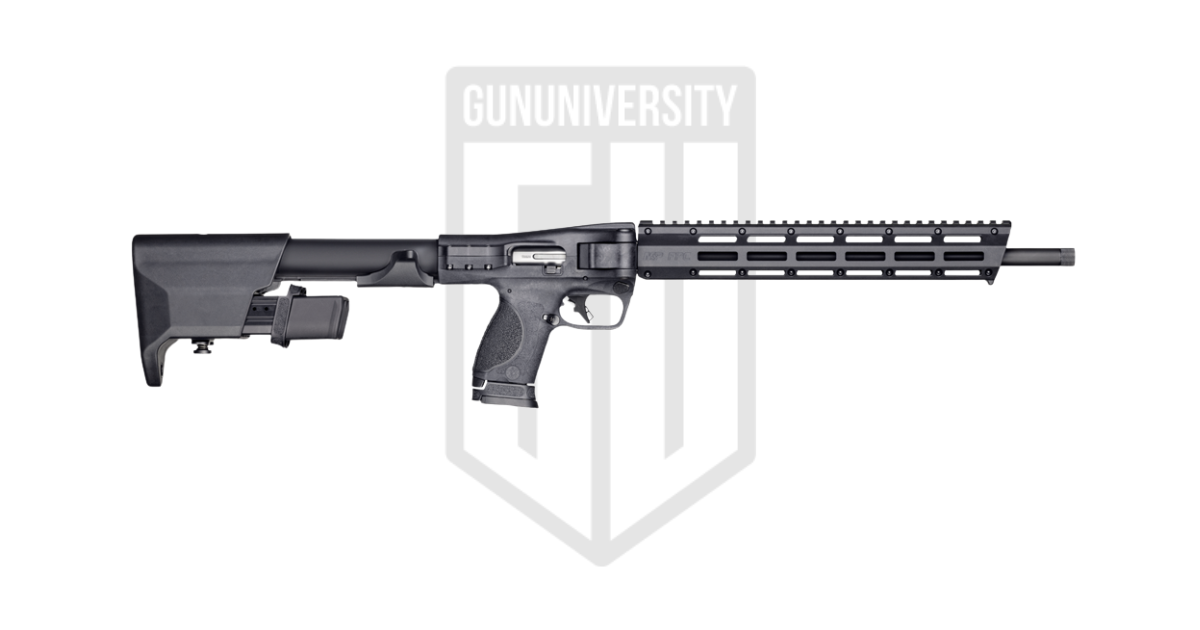
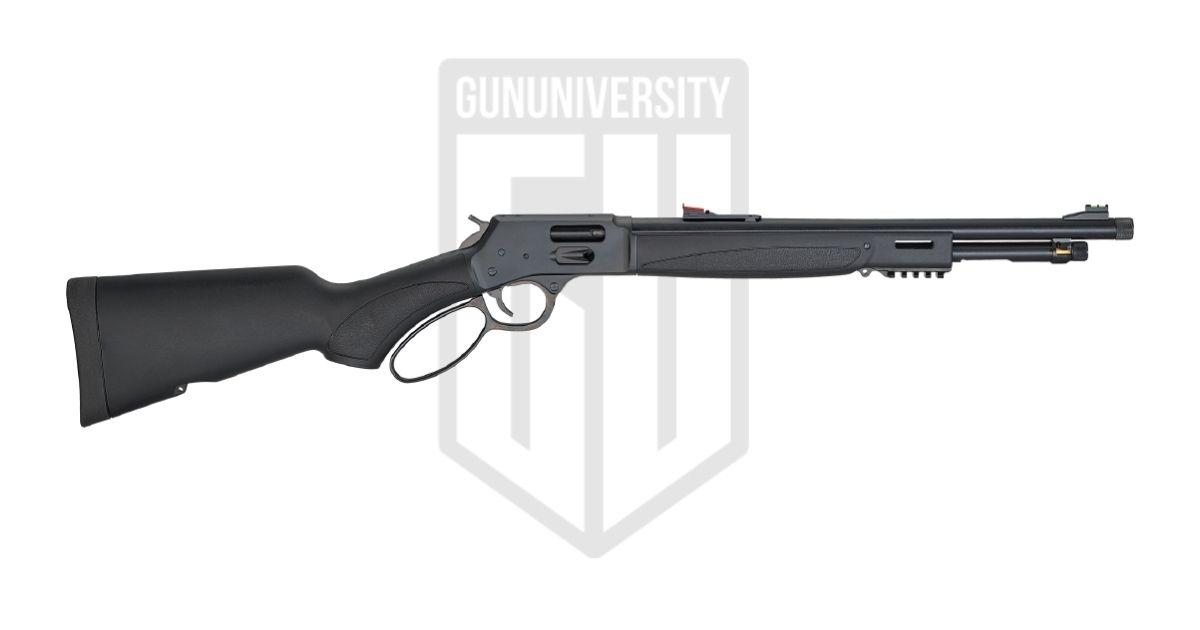


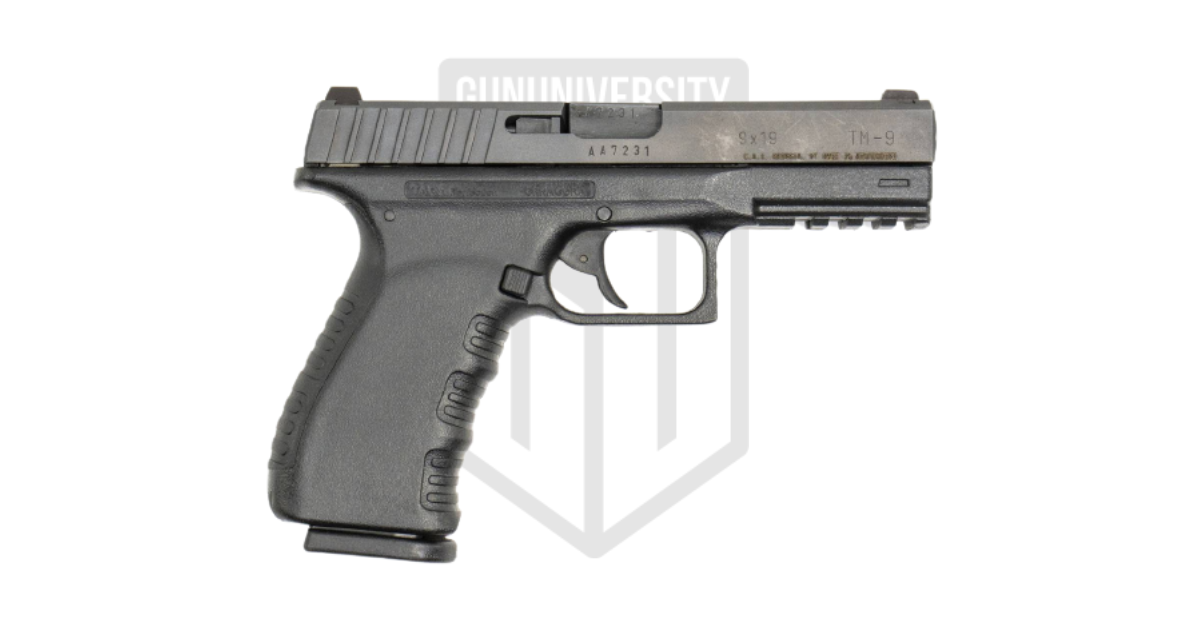
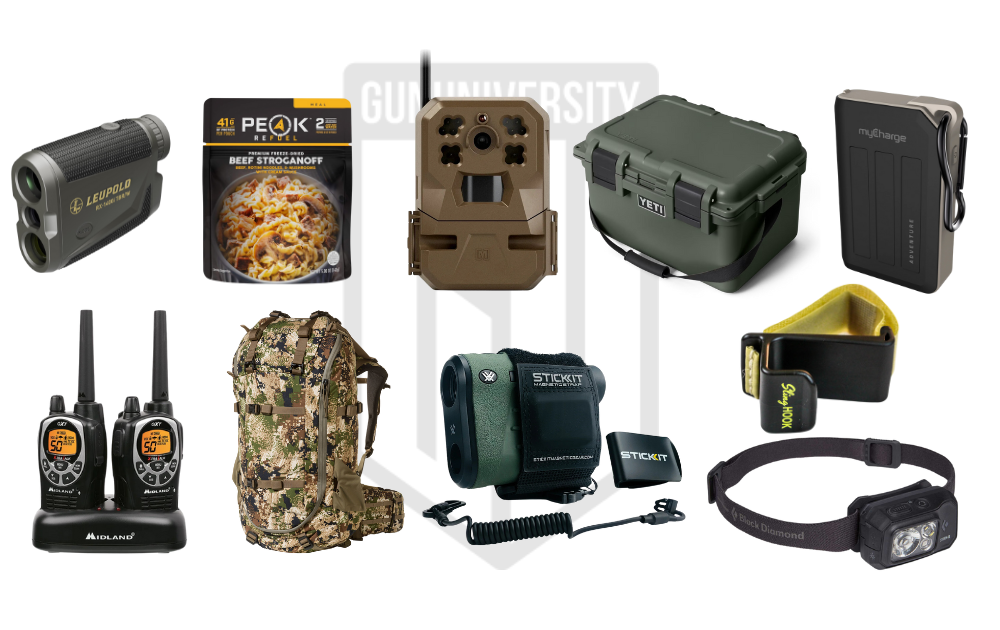
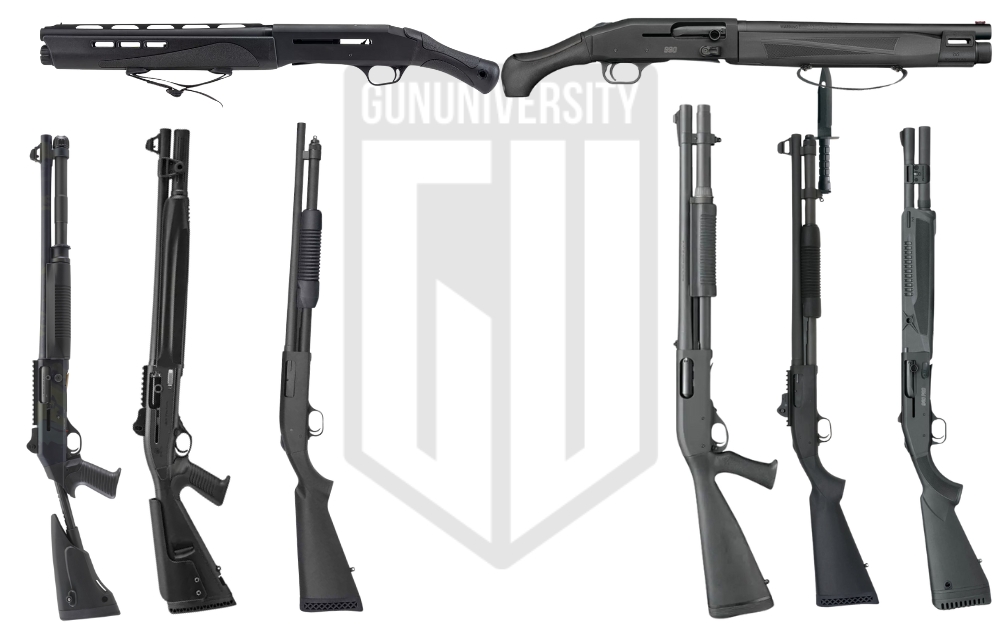
I realize this article was probably written before the Smith & Wesson M&P FPC came out and it was added to the article later, but to have the Keltec Sub 2000 make the list and just a mention of the FPC as an afterthought is a bit of a travesty. This best of list has some very nice shooting PCCs, but would love to have seen the FPC on the list as well. Or maybe even a full review of the FPC and not just a comparison with the Henry Homesteader. Otherwise, really great article.
GunUniversity’s “cons” on this weapon are true, however, I don’t rate highly those “cons” and do not give the same weight I would give the “pros”, which are also true. Depends on priorities…I guess. I personally have no problem with a stiff trigger or recoil spring. Weeds out the wimps!!
Now in late January of 2022 I have of two of the best PCCs.
#1. FN PS90 with aftermarket low Pic rail and Vortex SPARC II red dot)
#2, RUGER PC chassis carbine (much upgraded with M*CARBO & MAGPUL parts and a HOLOSUN AEMS circle/dot sight)
I think this article could use a second editing pass. Some things are a little odd. The CMMG Banshee is listed as having expensive mags, but most versions take Glock mags. And the Henry lever-action is listed as having a stiff recoil spring.